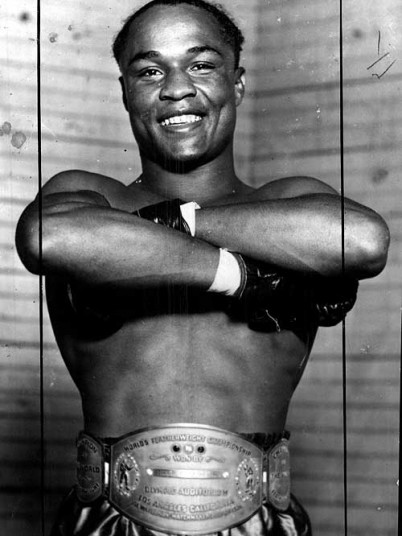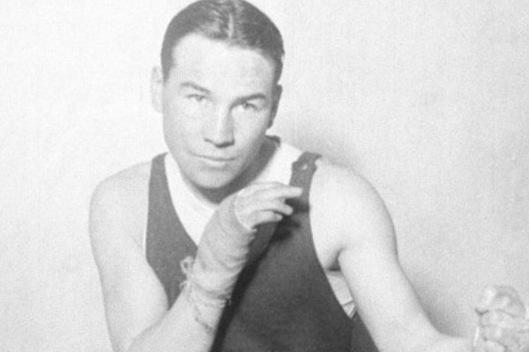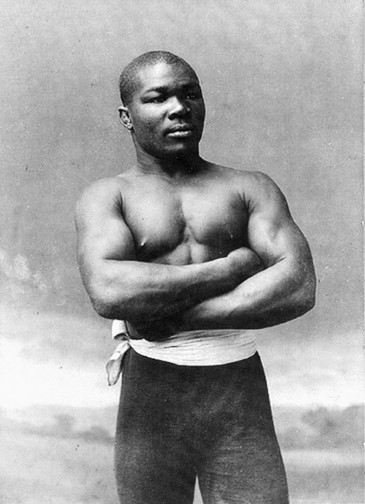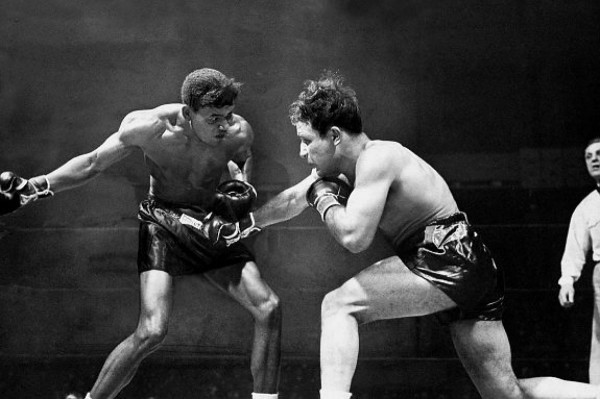The welterweight division is stacked with great fighters from the past to present, so picking 10 welterweights to stand head and shoulders above them all wasn’t easy.
Originally, I started with five slots, but extended it to 10 because of the wealth of talent. I also decided to make it a little bit easier by excluding active fighters or fighters who aren’t officially retired, but haven’t fought in some time.
Even with that, there are still so many legendary fighters who could grace an all-time list in this division, it would make your head spin. Despite it, I trudged on and put together a list of 10 welterweights that could stand up to any vetting or opinions from your local boxing enthusiast or unofficial historian.
Unfortunately, I still had to exclude fighters who deserved consideration. When you only have 10 spots, there’s an extremely selective mindset and there were fighters who were switched around on the list and guys who were on the initial list that didn’t make the final cut.
So, having said all of that, let’s get into it and leave your thoughts and comments on the list, even if you disagree.
10. Thomas Hearns
(61-5-1, 48 KOs)
“The Hitman” or “Motor City Cobra”–of which Thomas Hearns preferred the latter–was a wiry and tall welterweight with huge shoulders packing an unfairly long jab and murderous right hand.
Though not as established as other fighters on this list, Hearns made waves when he turned pro in 1977. A member of the four horsemen of the 80’s, people talked about his start and rise in boxing like he was a monster, and he was indeed a monster. He rose to prominence quickly, winning his first 17 fights at welterweight via knockout.
In his first title shot for the WBA welterweight belt, Hearns defeated Pipino Cuevas with a crushing second-round knockout. He defended the belt three times all by KO before losing his unification bout with Sugar Ray Leonard in the same fashion.
Hearns immediately went up to junior middleweight following the loss, but continued the success by winning a title and beat the likes of Wilfred Benitez and also handing Roberto Duran the only knockout loss of his career.
His record at welterweight was a great one, 17-1 with 17 KOs.
9. Emile Griffith
(85-24-2, 23 KO)
Emile Griffith had his most notable wins at Middleweight, though his resume at Welterweight is just as good, if not better. In 1960 Griffith, a full-sized welterweight, went through a string of top contenders before getting a shot at the crown in 1961 against Benny “The Kid” Paret.
Griffith won the fight by KO in the 13th round securing the title. Unfortunately, this fight set up a trilogy that would end in tragedy. In the second fight, Paret was the victor, beating Griffith by the narrowest of margins with a split decision to take back the welterweight belt.
By the third bout, it was apparent that Paret was not pretending to be friends with Griffith and the talk by Paret leading up to the fight sparked some bad blood. During the fight, Griffith got up off the canvas to plow Paret with several unanswered right hands that resulted in Paret’s death. This affected Griffith deeply and he almost gave up fighting as a result.
Griffith decided to continue and defended the title twice, winning the EBU Jr. Middleweight title in between defenses. He defended the EBU title once more before losing the welterweight title to Hall of Famer, Luis Rodriguez. Griffith reclaimed the title in an immediate rematch. Griffith went on to defend the welterweight title four more times before vacating and chasing Dick Tiger’s Middleweight belt.
During his stretch of winning the Welterweight title three times from 1961 through 1966, Griffith faced all top 10 contenders available, including Rubin “Hurricane” Carter, and amassed a record of 11-2, with six victories by knockout. He made one more unsuccessful attempt at the welterweight crown against Jose Napoles in 1969 before settling at middleweight for the remainder of his career.
8. Jimmy McLarnin
(54-11-3, 20 KO)
Barney Ross and Jimmy McLarnin are tied together, so if Ross made the list, McLarnin couldn’t be too far behind him.
While he may have had the luck of the Irish, McLarnin didn’t need it in the ring. An excellent fighter with a “baby face” and a great punch, McLarnin would dance a jig and flip in the ring to celebrate his victories.
McLarnin had a great resume before entering the welterweight ranks, defeating the likes of Filipino legend Pancho Villa (in Villa’s last fight), Kid Kaplan, Fidel LaBarba, and Sammy Mandell–for which he garnered great acclaim.
On his way to a title shot at Welterweight, he defeated Billy Petrolle and “The Ghetto Wizard,” Benny Leonard. In his first Welterweight title bout, he knocked out fellow Hall of Famer, Young Corbett III, in the first round.
After winning the title in his first defense, he took on Ross which set off a trilogy that would define them both, the decade and possibly the era. Barney, of course, won the first battle. McLarnin regained the title in the second, then dropped the third to Ross in the rubber match.
McLarnin fought three times after his last fight with Ross. Before retiring, he faced Tony Canzoneri twice, splitting the pair, and decisioned Lou Ambers before calling it quits.
7. Barney Ross
(72-4-3, 22 KO)
No, not the character Sylvester Stallone plays in Expendables, but that is where the name came from. Barney Ross was a great fighter and called the pride of Chicago’s ghetto. From 1933 to 1938 Ross was never without a title. In 1933 Ross won the Lightweight and Junior Welterweight title from Hall of Fame fighter, Tony Canzoneri.
Though Ross made his name in the lightweight division, it was his rivalry with Jimmy McLarnin that defined the mid 30’s and helped build the folklore surrounding the “Welterweight title Jinx” of the decade.
In 1934 and 1935 they faced off in three title fights. Ross took the first by decision becoming the new champion, though the pair traded knockdowns. McLarnin won the immediate rematch by decision to regain his title. Ross took the rubber match declaring supremacy over McLarnin.
All the while, Ross was defending his junior welterweight title. After the third Welterweight fight with McLarnin, however, Ross had relinquished his lightweight and junior welterweight titles.
In his last fight, he relinquished the title to Henry Armstrong in a fight he was losing badly but refused to give up. Throughout his career Ross faced six Hall of Fame fighters, defeating all but Armstrong.
6. Kid Gavilan
(108-30-5, 28 KO)
“The Cuban Hawk” was a worker on a sugar plantation. The swinging motion used to chop canes with a machete was forged to create his signature punch, the bolo punch, a looping uppercut which many opponents avoided in the ring–if they could.
Kid Gavilan went pro in 1943 in Cuba winning the Cuban lightweight title in 1945. By 1947, Gavilan had crossed over, becoming a notable welterweight contender. Gavilan faced a lot of contenders and Hall of Famers such as Ike Williams, Beau Jack, Paddy Young, Tommy Bell, Billy Graham and Sugar Ray Robinson.
Gavilan had his first shot at the title against Sugar Ray Robinson in 1949 which was unsuccessful. It wasn’t until 1951 that Gavilan won the welterweight title from Johnny Bratton. He went on to defend it seven times, once against Carmen Basilio.
He also attempted a Middleweight title shot against Bobo Olson which he lost by decision. That marked the beginning of the end for Gavilan as he lost the welterweight title to Johnny Saxton. Through his last 30 fights he won only 13. His welterweight run was an epic one, which saw him face six Hall of Fame pugilists multiple times, and beating all but two, Robinson and Olson.
5. Sugar Ray Leonard
(36-3-1, 25 KO)
Ray Charles Leonard was primed for the spotlight after his performance at the 1976 Olympics. His career was the most televised, but also shortest of any others on this list. It cost him a few spots, but he made the most of his time.
Leonard turned pro in 1977, but it was in 1979 that Leonard went through many contenders, including Floyd Mayweather Sr., on the way to a title shot with Puerto Rican dynamo, Wilfred Benitez. Leonard secured the title with a 15th round TKO, defending the title once before facing Roberto Duran in the same place he competed in the Olympics, Montreal.
When he faced Duran for the first time, many felt that Sugar Ray was pampered and would be easily beaten by the rugged Panamanian.
Leonard earned the respect of many by proving his mettle and willingly exchanging with Duran in an unsuccessful defense, he would rectify the loss later that year in New Orleans. The “No Mas” fight, in which Duran quit in the eight round, left the boxing world stunned.
In 1981 Sugar Ray topped that performance by knocking out his rival, Tommy Hearns, after being down on points for the majority of the fight. In between those fights Leonard also won the junior middleweight title by knocking out Ayub Kalule, which meant he held two weight class titles simultaneously.
Leonard briefly retired after the Hearns fight with a detached retina, but he came back to defend his title once more before retiring again for two years. He would never again fight at Welterweight, but he would move up in weight and shock the world again besting the other great fighter of the 80’s, Marvin Hagler.
Some consider the best four fighters of the decade to be Leonard, Hearns, Hagler and Duran; affectionately known as the four horseman.
4. Jose Napoles
(81-7, 55 KO)
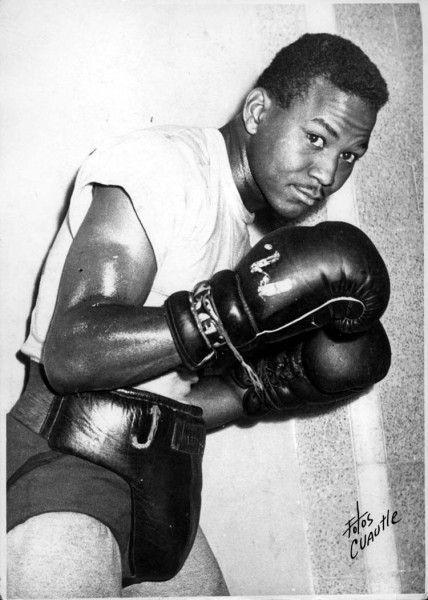
“Mantequilla” had one of the smoothest styles for a boxer-puncher, thus nicknamed the Spanish equivalent of butter.
Turning pro in 1958, the young Cuban won his first fight with a one-punch knockout. When Fidel Castro banned pro boxing in Cuba, Napoles fled to Mexico to continue his pro career. Having already amassed an impressive record of 48-4, with 28 KOs, it was in 1967 that Napoles begin fighting at 147 pounds.
Two years later in 1969, the boxing world took notice of Napoles and he finally got his overdue title shot against rival and future Hall of Fame fighter, Curtis Cokes. Napoles defeated Cokes by knockout in the 13th round. He defended the title three times–one of which was against Hall of Famer Emile Griffith–before facing top 10 contender and rival Billy Backus, who dethroned him via fourth round knockout.
In the rematch, Napoles regained the title with an eighth-round TKO. Napoles defended the welterweight title six more times before making an attempt at Carlos Monzon’s middleweight crown. Monzon stopped Napoles in the seventh, but Napoles still remained welterweight king.
He went on to defend the title four more times against top contenders, bringing his count of successful title defenses at welterweight to 10. In his 11th defense in 1975, he was dethroned by John Stracey and decided to call it a career.
3. Joe Walcott
(92-25-24, 58 KO)
“The Barbados Demon” was a freak of nature. Not even a full inch over five feet tall, Joe Walcott’s career saw him face and conquer the gamut of Hall of Famers, who ranged from lightweights to as big as Heavyweight.
He knocked out Joe Choynski, a heavyweight who went on to beat the legendary Jack Johnson. Walcott went so far as to call out legends like James J. Corbett, Bob Fitzsimmons, and “Great White Hope” Jim Jeffries; all of which refused to fight fighters of color and used Walcott’s size as an excuse to avoid him.
Walcott won the welterweight title in 1901, retaining it for almost five years, fighting to a draw in most of his defenses, but knocking out many challengers to his crown.
The historical account of his reign was muddled over time with conflicting accounts, which makes it difficult to present all the challengers accurately. Throughout his career, Walcott would face a myriad of Hall of Fame legends, fighting the likes of Joe Gans, Philadelphia Jack O’ Brien, Sam Langford and Young Peter Jackson to name a few.
2. Sugar Ray Robinson
(173-19-6, 108 KO)
The greatest pound-for-pound fighter to walk the earth, Sugar Ray Robinson spent half of his career within the welterweight limit despite fighting heavier opponents for most of it. He ran a gauntlet of 40 fights against future champions and future Hall of Famers at welterweight and middleweight, before meeting his storied rival, Jake LaMotta, in a rematch that gave him the first loss of his career.
World War II disrupted Robinson’s fast track to the welterweight title, as he and the champion at the time were both enlisted. After Robinson’s strange and inexplicable discharge, he bided his time until he could challenge for the Welterweight belt.
Robinson won the vacant Welterweight title over Tommy Bell via decision and defended the title five times over the next five years. Robinson sporadically fought middleweights and even attempted to take the middleweight title while holding the welterweight crown. Robinson soon vacated the title and moved up to challenge LaMotta’s middleweight supremacy, which he did convincingly.
1. Henry Armstrong
(151-21-9, 101 KO)
Henry Armstrong was a spark plug of a fighter whose fists would pump like pistons as he ran though opponent after opponent as a welterweight challenger and champion.
Unsatisfied with the lack of attention to smaller fighters despite his amazing run in 1937 to the featherweight title, 1938 was the year that Armstrong became the only fighter in boxing history to hold three titles simultaneously; the Featherweight, Lightweight and Welterweight titles.
Upsetting the “Welterweight title Jinx of the 30’s,” which saw 12 previous champions fail, Armstrong was the only champion to defend the welterweight title 19 times, a feat that is still unsurpassed today. He also amassed a knockout streak that reached 27, which remains 10th on the all-time list.
Over his career he faced 17 Hall of Fame fighters, defeating 15 of them. Armstrong remains the greatest welterweight fighter we’ve seen in the sport of boxing.
